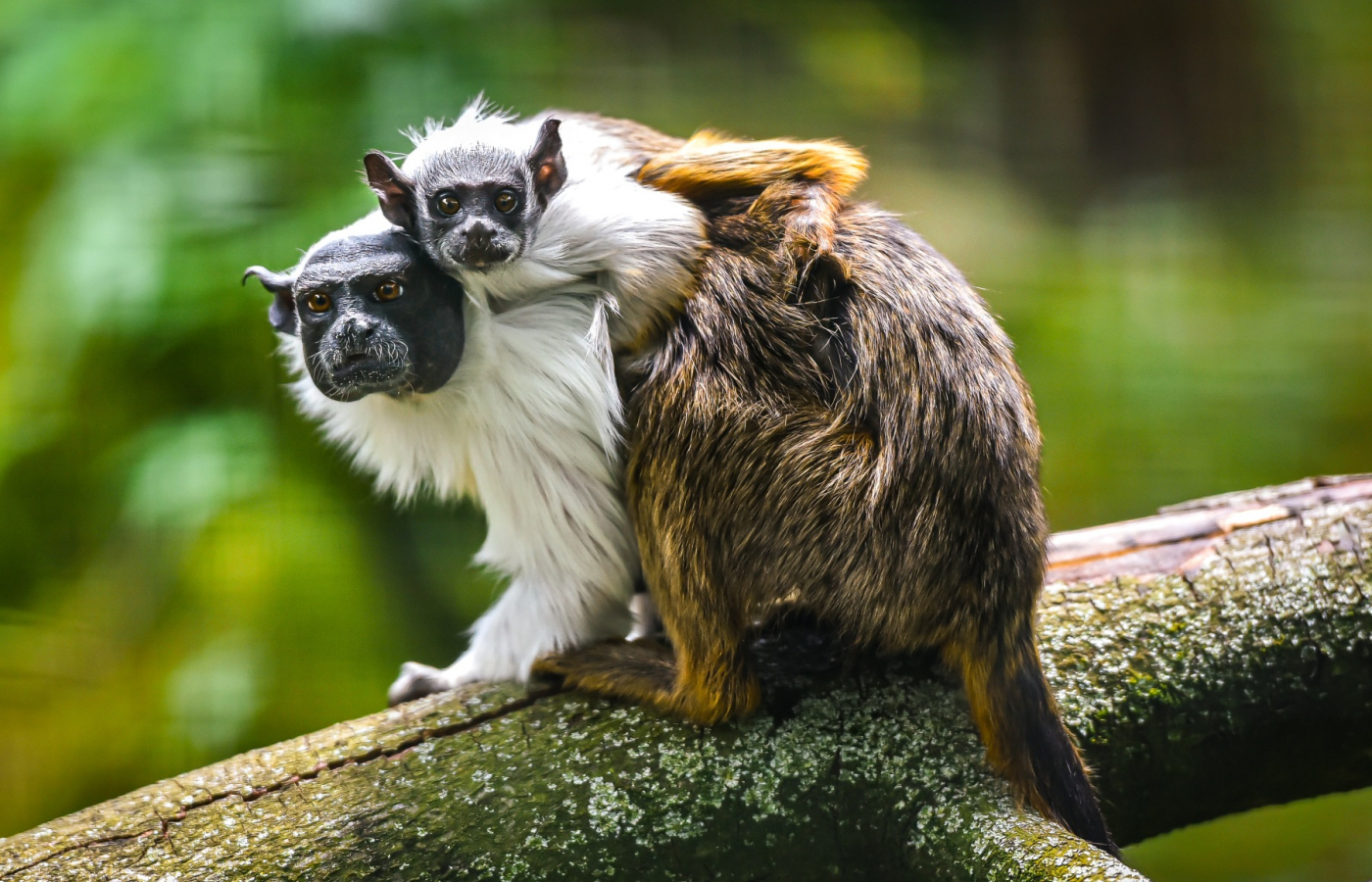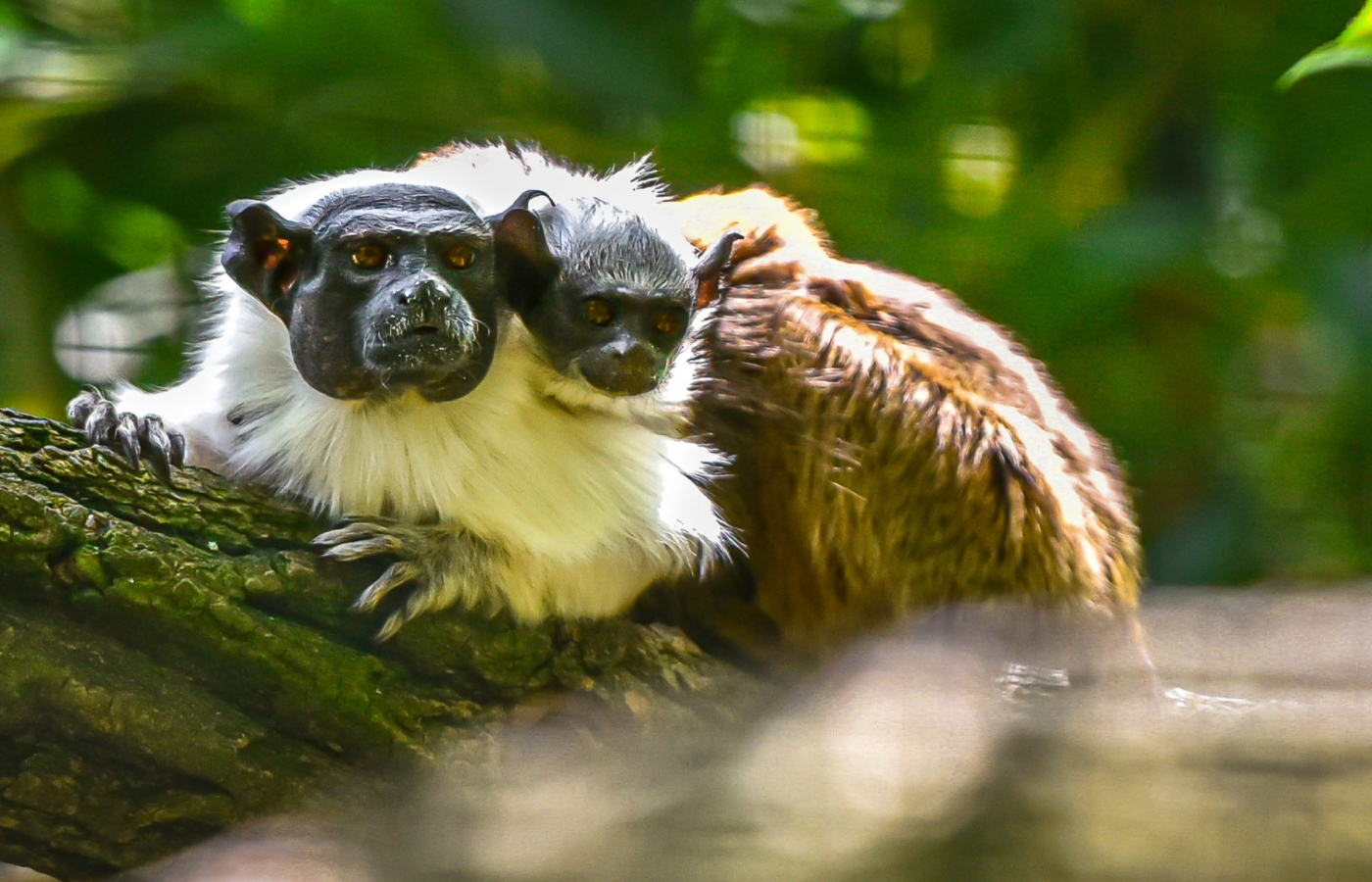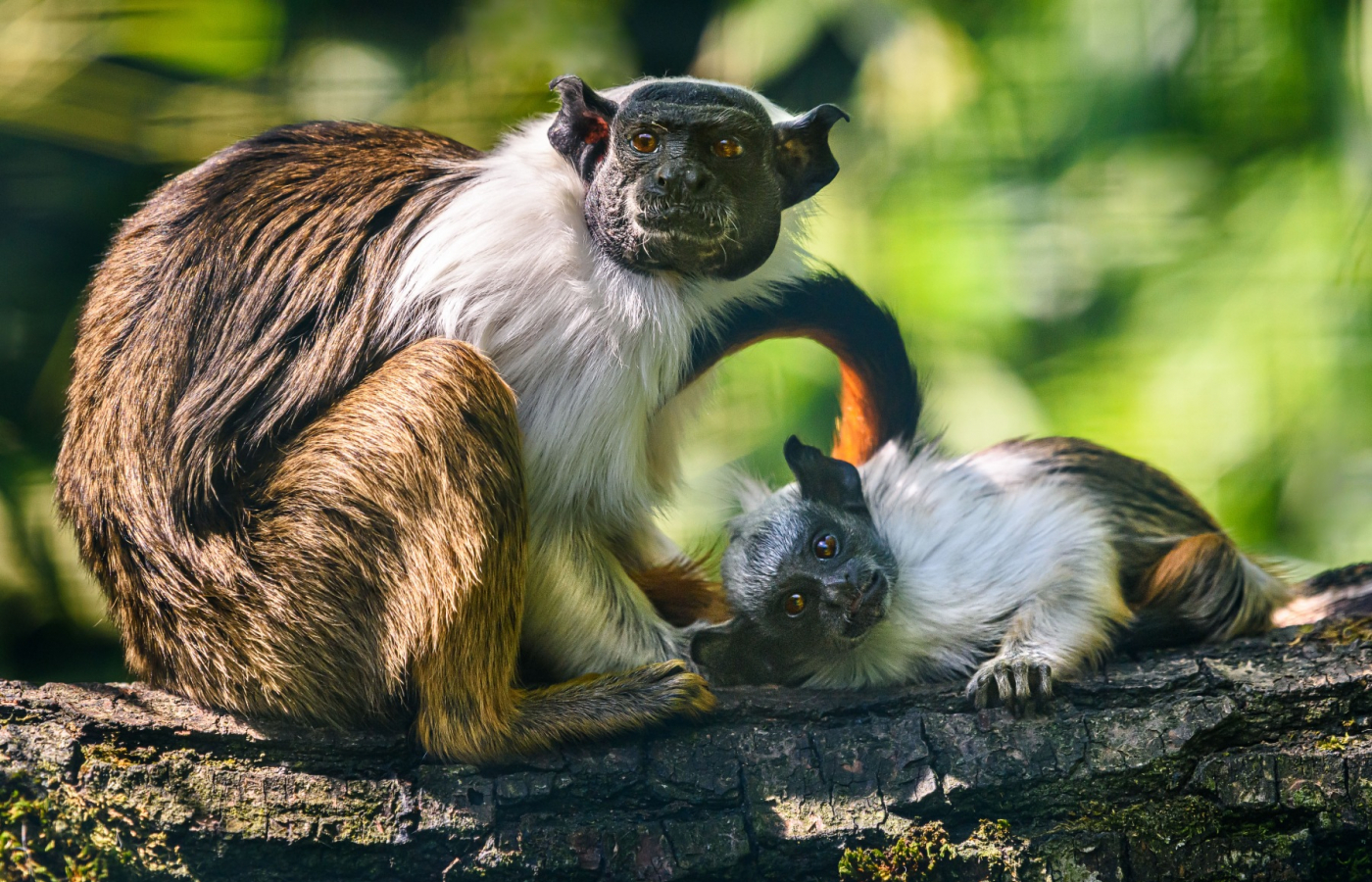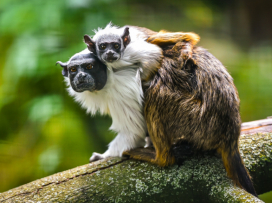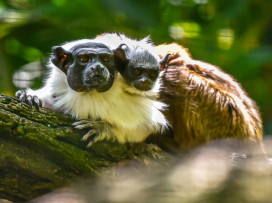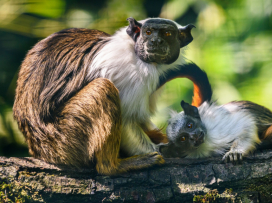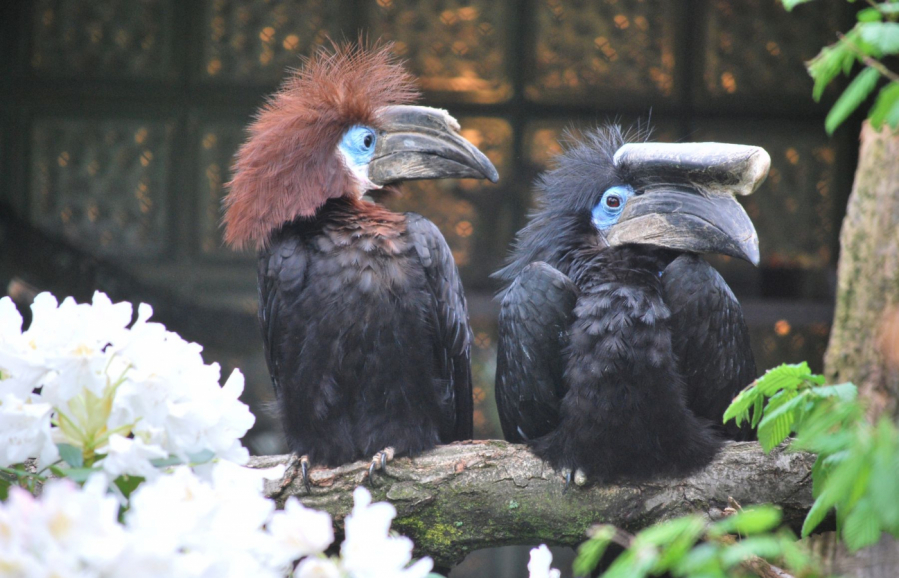The baby of the critically endangered pied tamarin is thriving
We have an extraordinary breeding success to celebrate! For the very first time in our history, we have managed to raise a baby of the critically endangered pied tamarin.
The tiny baby tamarin was born in March earlier this year and thanks to the care of its parents, it is thriving and moving freely in the exhibit near the tropical Yucatan hall. Visitors can see this species of tamarins in thirty European zoos, but in the past 12 months, only 3 of the zoos have successfully bred them (ours included).
Since 2017, Zlín Zoo is breeding pied tamarins as the only zoo in the Czech Republic. The breeding pair consists of the female tamarin named Marina, who was brought from the German Zoo Magdeburg, and of the male called Manaus, obtained from the Swedish Zoo Eskilstuna. "We have acquired the male in September 2023 and he has paired with Marina immediately, it was love at the first sight. The both parents cooperated absolutely perfectly in raising the infant. These species is very special in the terms of their parental care, which is mainly paternal. The infants are being handed over to the mother only several times a day for nursing," explained Markéta Horská, the head of our zoological department. The vast majority of female tamarins give birth to twins, and this has also happened in our zoo. "Unfortunately, one of the babies was stillborn. However, the second one was very vital and the male started taking care of it immediately. The female did not participate in the rearing until the following day, when the male handed the baby over to nurse it for the first time. Gestation and the birth are very exhausting for the female tamarins and they need a plenty of rest to recover," added Mrs. Horská.
As its generic name suggests, the pied tamarins are definitely not to be missed. They have a dark bat-like head, their dark faces stand out against the white hair covering their chests, forearms, and backs of their necks. The rest of the body varies from deep to light, warm brown. They usually weigh around a pound. Pied tamarins are clawed monkeys - the tips of their fingers are covered by tiny, quite sharp claws, helping them to climb trees and also to gather food. Tamarins live in treetops, coming down to the ground rarely. They form small groups of up to 14 individuals, but only one female per group mates. A special pheromone she releases actually suppresses estrus in all her other female group members. After 140-170 days of gestacy she gives birth. For the first three weeks, the babies are fully nursed, after that, the food for adults is gradually added to their diet. At the age of two months, they begin becoming independent. Females mature at 18 months of age, males at 24 months. The diet of tamarins in the wild consists of various fruit, insects, and nectar. In our zoo, they particularly enjoy papaya, blueberries, apples, vegetable (celery, fennel, chicory, boiled carrots and sweet potatoes) and they are also fed insects or quail eggs.
The homeland of pied tamarins are the tropical rainforests in Brazil. They can be found exclusively in a small area around the Brazilian city of Manaus. Currently, the pied tamarins belong to the critically endangered species – the sole reason is the drastic loss of their domestic environment due to the constant expansion of the city, predators and also the pet trade. The government of Brazil, along with numerous non-governmental and international organizations and zoological institutions, is thus trying to ensure the protection of this species, as well as educating the local population about the importance of tamarin conservation.
Good to know
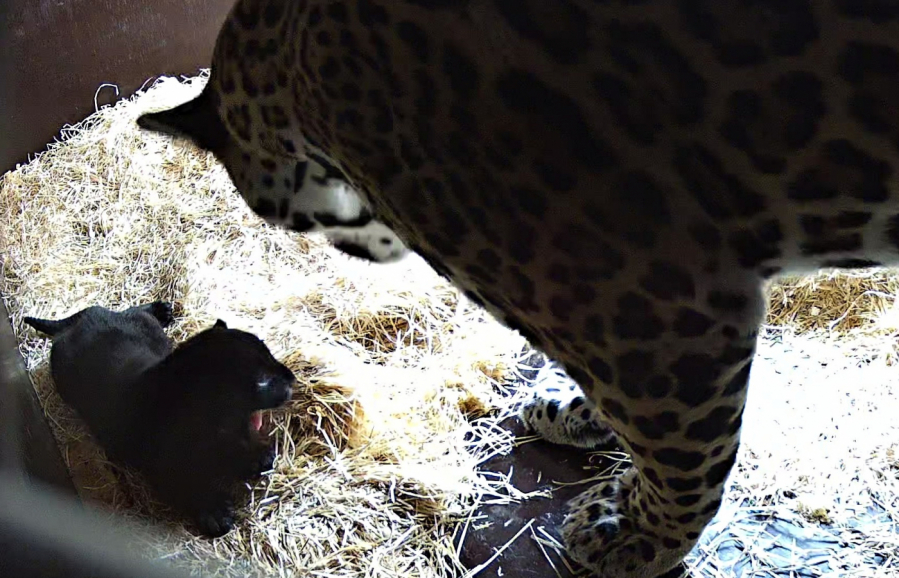
Akabo and Yuna Welcome Their First Cub!
We’re celebrating a breeding success of global importance—jaguars Yuna (5) and Akabo (3) have become parents for the first time!
Explore new things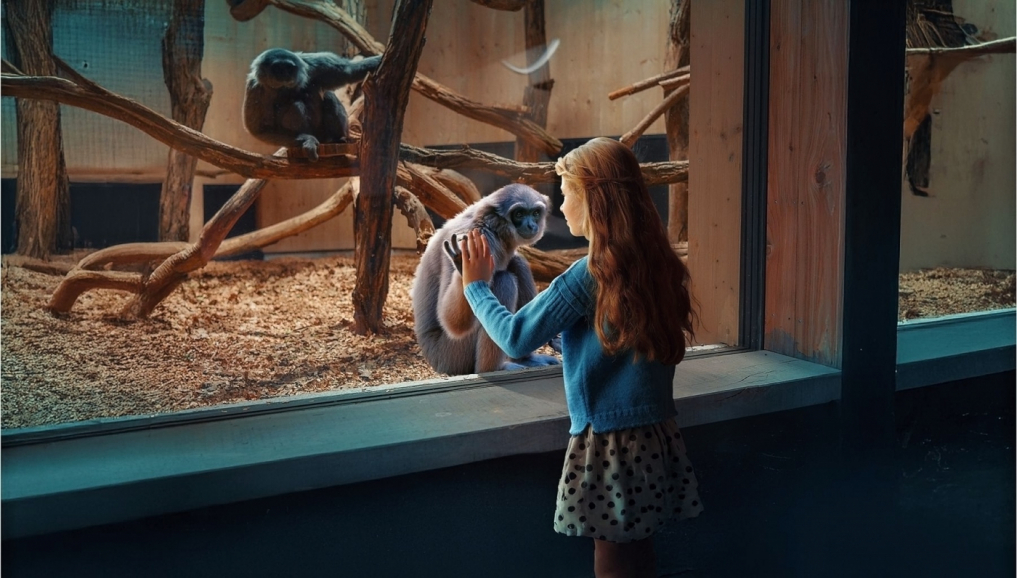
New Gibbon Exhibit "Gibonika" Opened
On Saturday, April 5, Zlín Zoo officially opened Gibonika, a new indoor exhibit dedicated exclusively to silvery gibbons.
Explore new things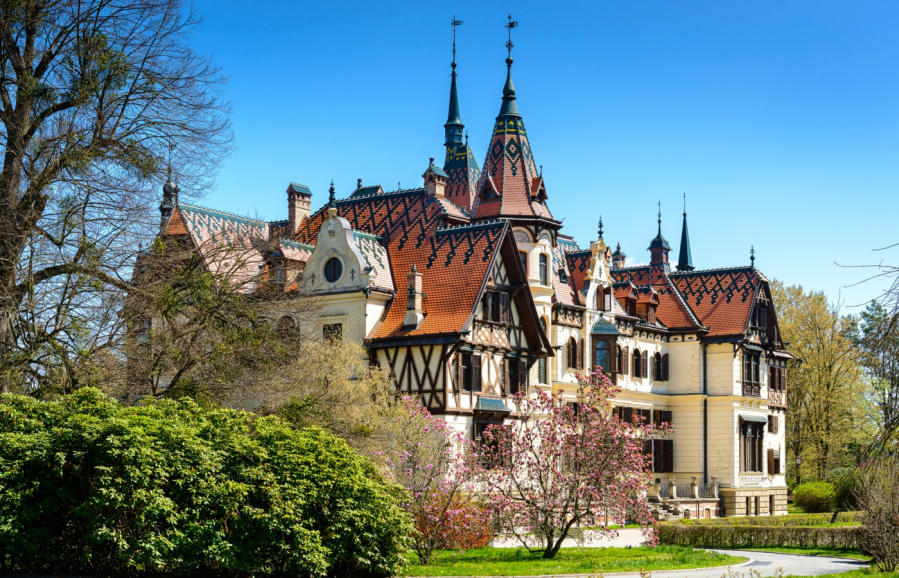
We Invite You to Visit Lešná Chateau
Don’t miss the unique opportunity to explore the enchanting Lešná Chateau. Join a guided tour and discover its rich history and stunning interiors!
Explore new things


